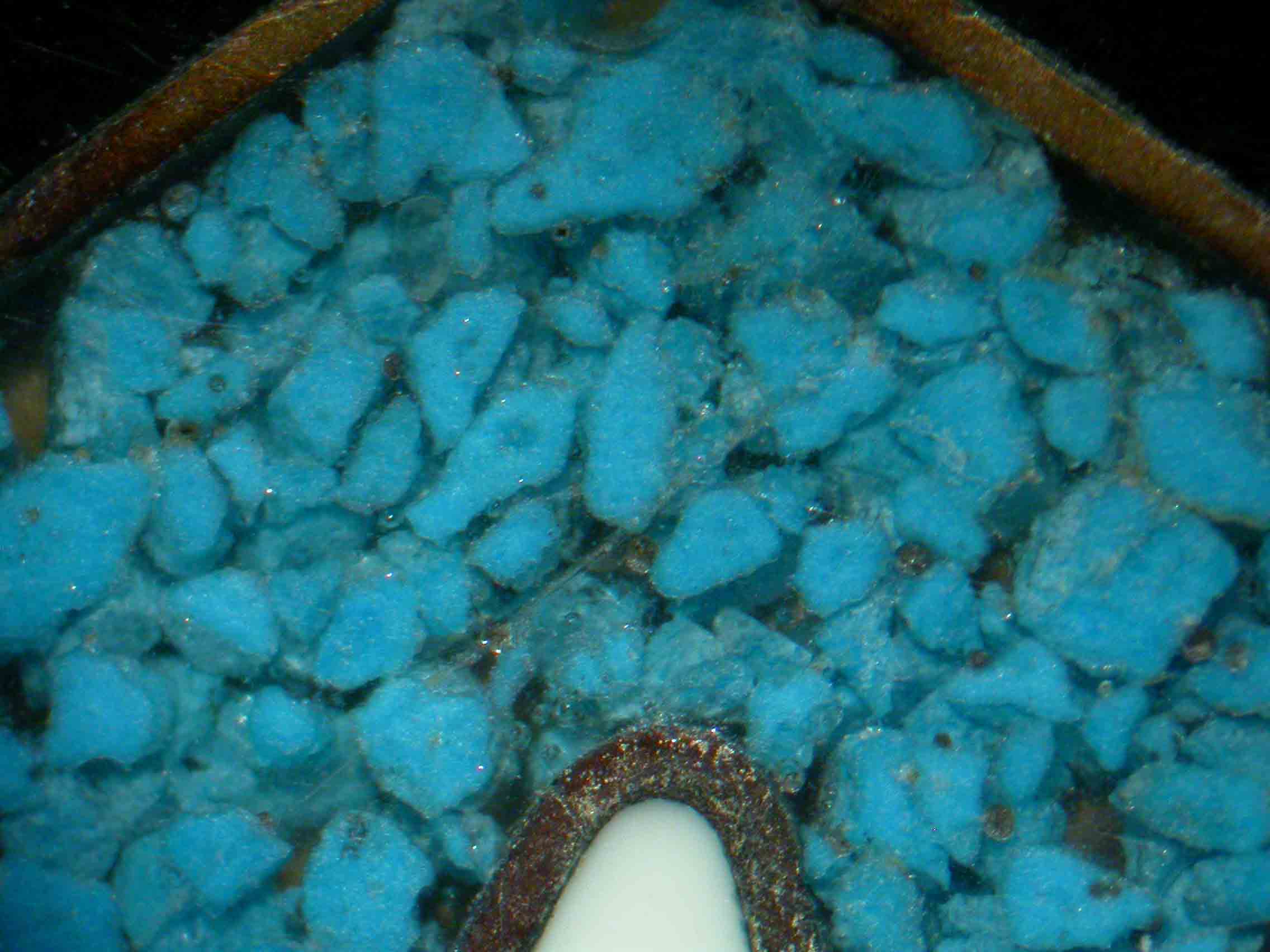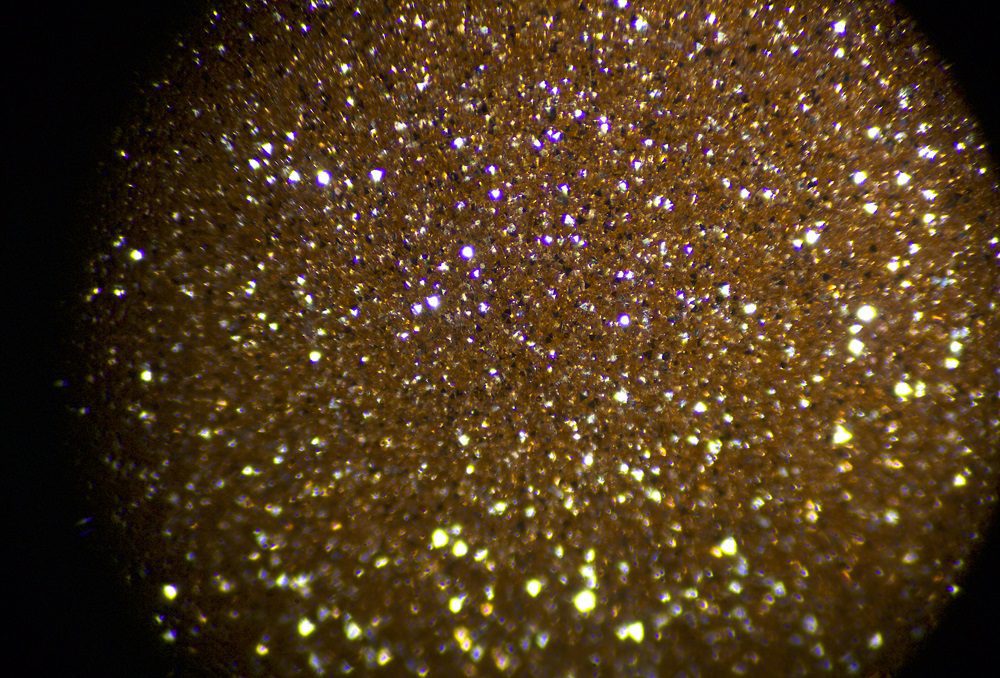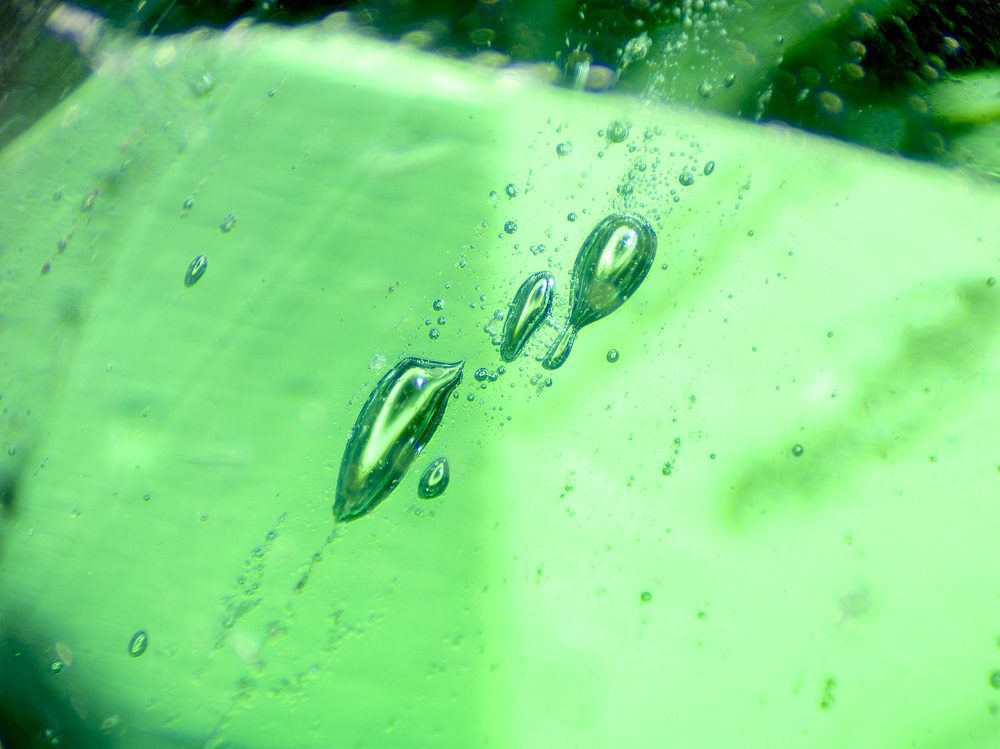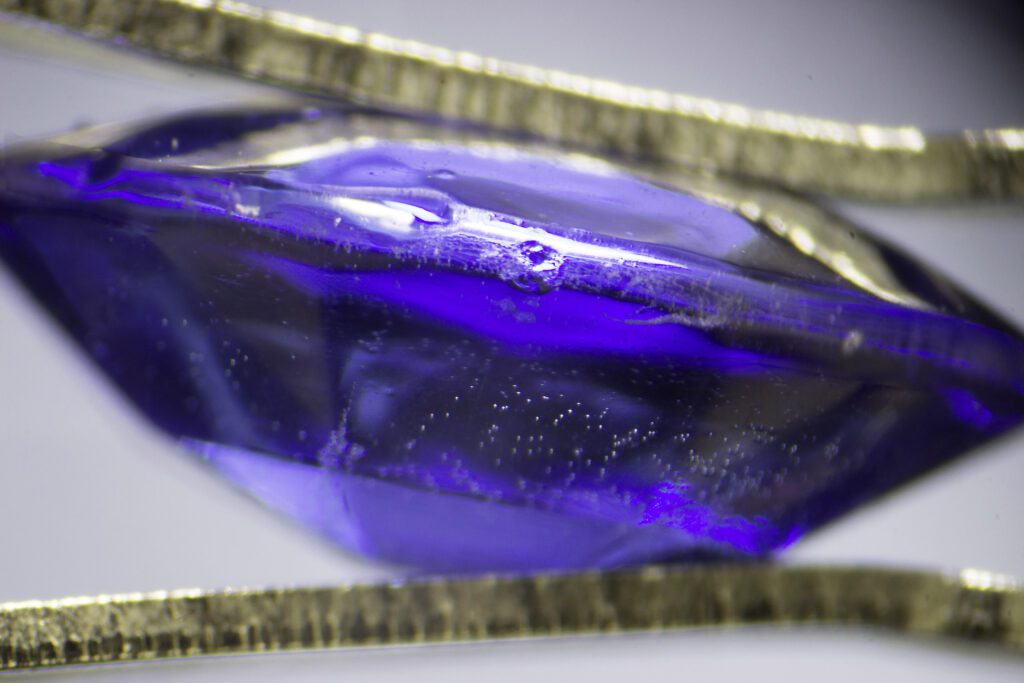Gemmologists often encounter simulants of natural gemstones. Synthetic and composite stones of various kinds may be troublesome to identify, but those made of glass are among the most common and are usually easy to recognise. As Gem-A Tutor Pat Daly describes in the article below, glasses may also be natural stones, and therefore, to distinguish artificial materials, the term ‘paste’ is often used. Continue reading to find out more…
It is natural for those who deal in gemstones to regard glass as no more than a cheap substitute, but this ignores the aesthetic and technological developments that have developed over thousands of years and elevated glass making and design to art forms.
In ancient Egypt, jewellery had a protective and ornamental role, with both colour and shape being important. Some coloured stones, like lapis lazuli, were hard to obtain from distant lands and were expensive. Glass provided a more economical alternative which was acceptable for the most important purposes. For example, it was used extensively in the grave goods of Tutankhamun, including the famous mask. Other early civilizations appreciated glass simulants, and they are known from Mesopotamia, China, Greece, and Rome.


Paste chips in resin presented as a turquoise simulant, photographed by Pat Daly.
Producing Glass for Jewellery
Glass used in jewellery has been made in three ways, all of which were employed in Antiquity.
Paste is made by melting ingredients, including silica, colouring agents and chemicals that improve its working properties. It is moulded to shape or cut and polished from solid pieces. This type of glass may be transparent to opaque, of any colour and may simulate the textures and patterns seen in almost any gemstone. It may be foil-backed in jewellery settings to improve its brilliance so that it can mimic the high refractive index of stones such as diamonds and corundum. Modifications of production methods are used to produce optical effects, such as cats-eyes, iridescence, aventurescence and asterism. In devitrified glass, ingredients are added that crystallize at a higher temperature than that at which the glass solidifies. Fine needle-like to branching crystallites are seen in the glass, which may then closely resemble polycrystalline stones.


A paste simulated emerald, photographed by Gabriel Kleinberg.
Paste is the common gemstone simulant, which can be used as effective substitutes for all natural stones. Paste-set jewellery may be worn for security reasons; when wearing showy jewellery is appropriate but there is concern about the possibility of theft. Sometimes, in 18th and 19th century Europe, for example, it was fashionable to wear it and well-made pieces from that period can cost hundreds to thousands of pounds today. The famous Russian jewellery house Fabergé used red devitrified glass, known as purpurine, in carvings that are now highly collectable and valuable.
Enamel or Pâte de Verre
Powdered glass of any colour may be mixed with binding agents, such as oil, applied to surfaces or moulds and melted to produce enamel or pâte de verre. Enamel is used to add colour to jewellery surfaces, which may be flat to gently curved or could be three-dimensional in the style of sculpture. It may colour broad surfaces, which can be engraved before it is applied, or wires may be used to confine individual colours to larger or smaller areas of a piece. A technique called plique-à-jour produces a stained glass effect by constructing the wires on a thin backing piece, which is removed after the enamel has solidified.


A paste jade simulant, photographed by Pat Daly.
A carved or sculpted effect is produced by moulding and heating glass powder, and fine details can be added by subsequent engraving. Variations in colour, texture and translucency can be controlled during the process, and striking effects can be achieved. Pâte de verre became popular during the late 19th to early 20th centuries when the Art Nouveau style was fashionable. It was used to create naturalistic effects and was used, often in combination with enamels, precious metals and gemstones by jewellery makers, of whom the best known is René Lalique. Tens to hundreds of thousands of pounds are paid nowadays for antique Lalique jewellery pieces.
Glass Mosaics
Mosaics have been made for millennia by combining small pieces of stone or glass to construct larger decorative patterns. In late medieval times, religious motifs were made with small pieces of coloured glass, and this technique was adapted in Italy, especially in the 19th century, to the making of jewellery which could be sold to tourists. Italian makers specialised in micromosaics, in which there may be hundreds of individual pieces of glass to a square centimetre of decorated surface. Classical architectural and naturalistic designs are most often seen in jewellery, small boxes and other decorative items. Good examples of such mosaics remain popular today.


Goldstone glass, photographed by Gabriel Kleinberg.
Identifying Glass
The physical properties of glass make most identification easy. Enamels and pâte de verre may be recognised by the ways in which they are used, moulding and flow structures and occasional bubbles. Given the high value of some antique jewellery, testing should be limited to observation, and in case of uncertainty, advice should be sought from people who are experienced in handling it.


Bubbles in paste, photographed by Gabriel Kleinberg.
Paste may be identified by its poor lustre, compared with most gemstones, and the common presence of bubbles and swirls (internal curving flow structures) and moulding marks. Confirmation can be gained by using gemmological instruments. Transparent paste can be shown to be optically isotropic on the polariscope and to lack the property of pleochroism when a dichroscope is used. Readings on the refractometer are usually between 1.50 and 1.70. This combination of features is not found in gem varieties which are seen in antique jewellery. Opaque paste almost always has small chips and scratches, which display a glassy lustre. Since this is not seen on fractures on any polycrystalline gemstone, it is excellent evidence that a material is glass.


Swirl inclusions in paste, photographed by Pat Daly.
Artificial glass is used to make low-quality simulants for cheap jewellery, but this is not always the case. Respect is due to the artists and craft workers who have used it in some of the most appealing jewellery produced in previous centuries.
Main image: An oval-shaped faceted paste gem from the Gem-A Archives.


